What is bird ringing?

During bird ringing, an aluminium alloy or stainless-steel ring with a unique identification number is placed on a bird. This is not a new process, people have been marking birds for over 2000 years. One of the earliest written records was between 218 and 201BC, a Roman officer marked a swallow sent to him after being taken away from her nestlings, this ensured that the swallow would head straight back to its chicks when released. He marked it with a thread with knots to indicate the date of his relief attack. Since the Middle Ages, falconers fitted metal plates or bands to their birds with aristocratic marks or seals. Soon owners of doves and pigeons were also using markers. Swans were marked with metal collars by landowners. A Danish school teacher, Christian Mortensen was the first to mark birds for scientific purposes. In 1899, he placed zinc rings on European starlings. The first National ringing scheme was started in 1903 in Germany. The South African Ringing Association (SAFRING) was established in 1948 and the first birds ringed in Southern Africa was by the Witwatersrand Bird Club in 1948. They ringed 31 nestling Cape Vultures.
So why do we ring birds? The main purpose is to identify the bird as an individual and in so doing learn about how long they live and their movement patterns etc. It is especially interesting to track migrating birds which fly a long way like waders, swallows, warblers etc. Bird ringing can also be used to observe body condition changes, disease progression, breeding, moult and behavioural patterns. Bird ringing is also useful for more specific scientific studies as well.
All of the data from the bird ringing done by South African ringers is stored on a National Database administered by SAFRing. The data is then available for use for scientific studies.
How is this done?
Birds are captured using many methods, preference depends on the type of bird being captured, its habitat and ringer preferences. I use four main ways to capture birds.
1. Mist nets.
This is the most common trapping method. It is a fine net erected between poles. Specifically designed to capture birds in flight. They are made of soft stretchy material and have a “pocket” design. The birds fly into the net, much like a spider web, only they bounce and fall into a pocket of netting. If you happen across these nets, it is important to not interfere with the birds as removing them is a delicate process that takes training. Only trained people can completely untangle them and remove them safely.

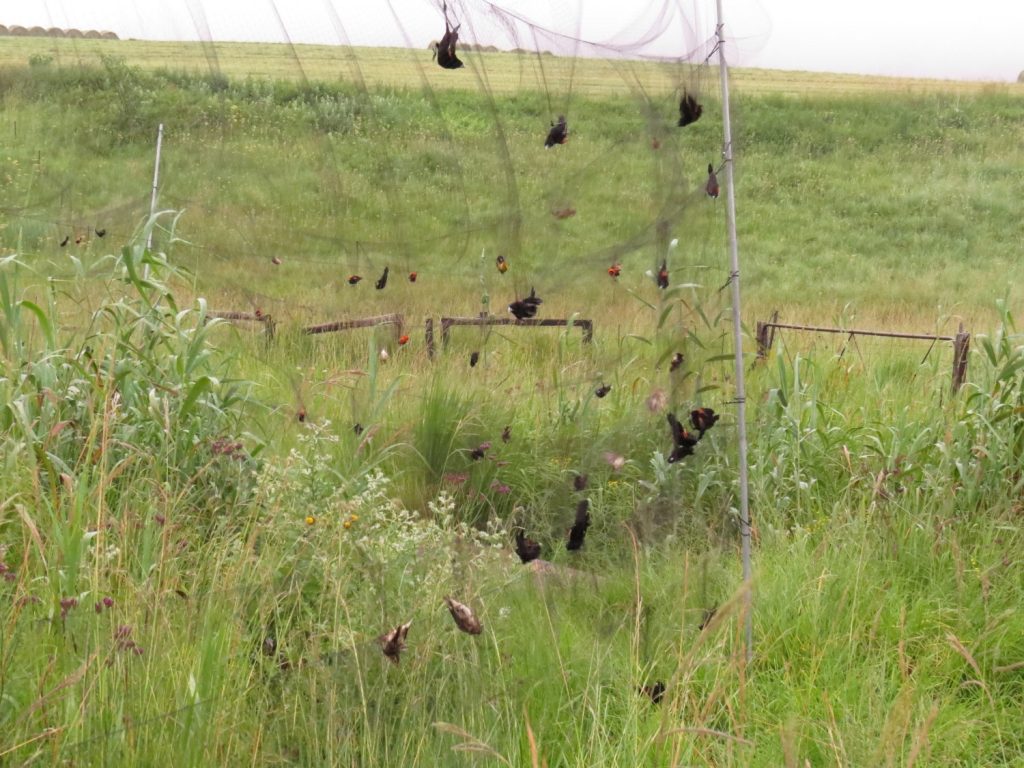
2. Spring trap
These are metal frames covered in stretchy netting. They have a trigger to which you can add mealworms as bait. The bird will trigger the trap to close over it when it goes to take the worms. The trap has a “soft close” and sponge cushioning the close.


3. Raptor clap trap
This works in a similar way to the spring traps but in this case the bait is typically a mouse. Blossom and Buttercup are my assistants for raptor capture. They get placed in a cage in the back of the trap so they are safe from harm. The trap is triggered when the raptor lands on the cage. The trap also has a “soft close” and sponge cushioning.
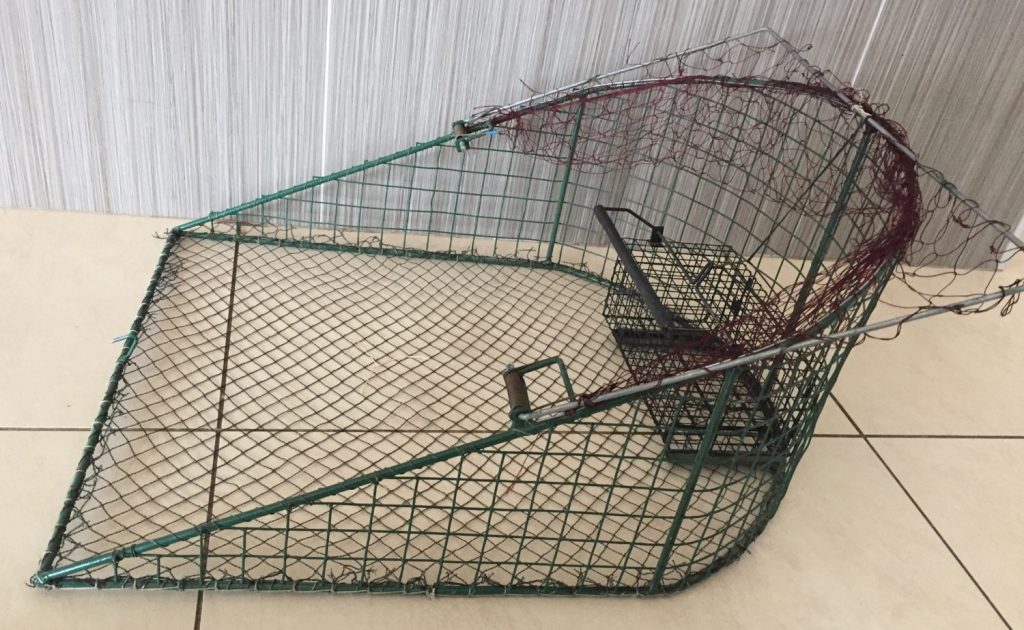
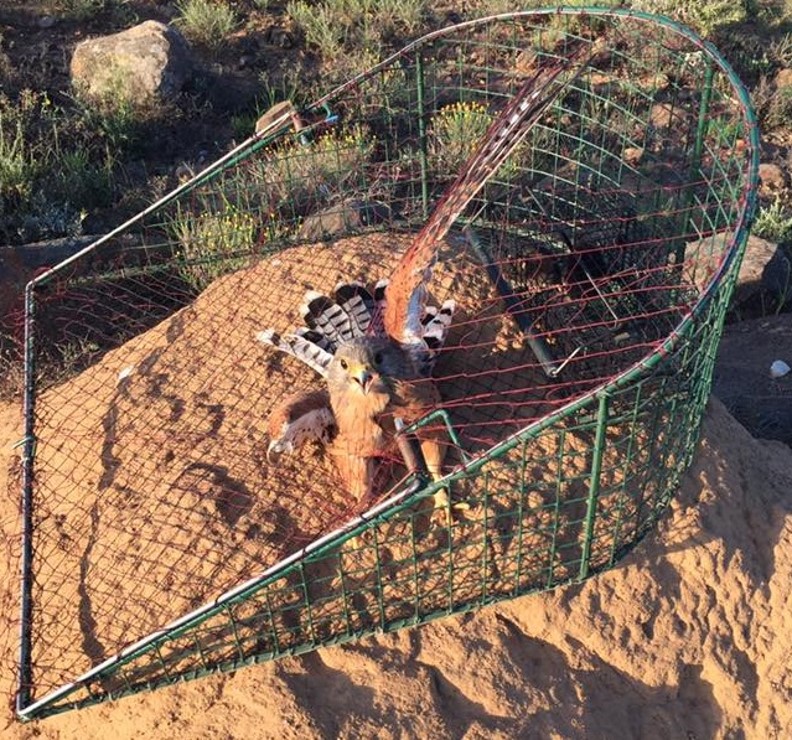
4. Walk-in trap.
These traps are designed for areas where birds are fed. The birds walk in for the food and cannot figure out how to get out of the trap.


What happens next?
After capture the birds are placed in breathable cotton bags for processing. Once in the bags and placed in the shade, they are calm and cool before they are processed.
Larger birds and raptors require two people. One is a handler that holds the bird securely while the bird is processed. Typically a hood or bag is placed over the birds head to keep them calm.

Small birds can be placed in the light weight, breathable bags in the shade until processing. This keeps them cool and calm since the bags are dark inside.

What happens during processing?
A ring is applied and various body measurements are taken. The most common measurements are body mass and wing length. Some ringers like me are very thorough about our data and collect a large amount. Including noting down moult and any other observations we make.
a. A ring is applied. The ring is C-shaped and is closed around the birds leg using special ringing pliers.Some research projects require the use of colour rings as well as the standard marking methods.
Rings come in different sizes to ensure the birds have the correct size ring for their leg size.

The metal ring is typically applied to the bird’s right leg.

b. Body mass is measured in different ways depending on equipment and species.
A small bird being weighed in a bag using a spring balance.

A pale chanting goshawk being weighed on a kitchen scale. It has a specially designed hood to keep it calm.

A bokmakierie is weighed a cup on a small bird scale. There is foam in the cup to cushion the bird.

c. There are some common body measurements that are taken, for example bill length, wing length and tail length.
Measuring bill length on a rock kestrel.

Measuring wing length and looking for wing moult on a hottentot teal.

Measuring tail length on a yellow-throated longclaw.
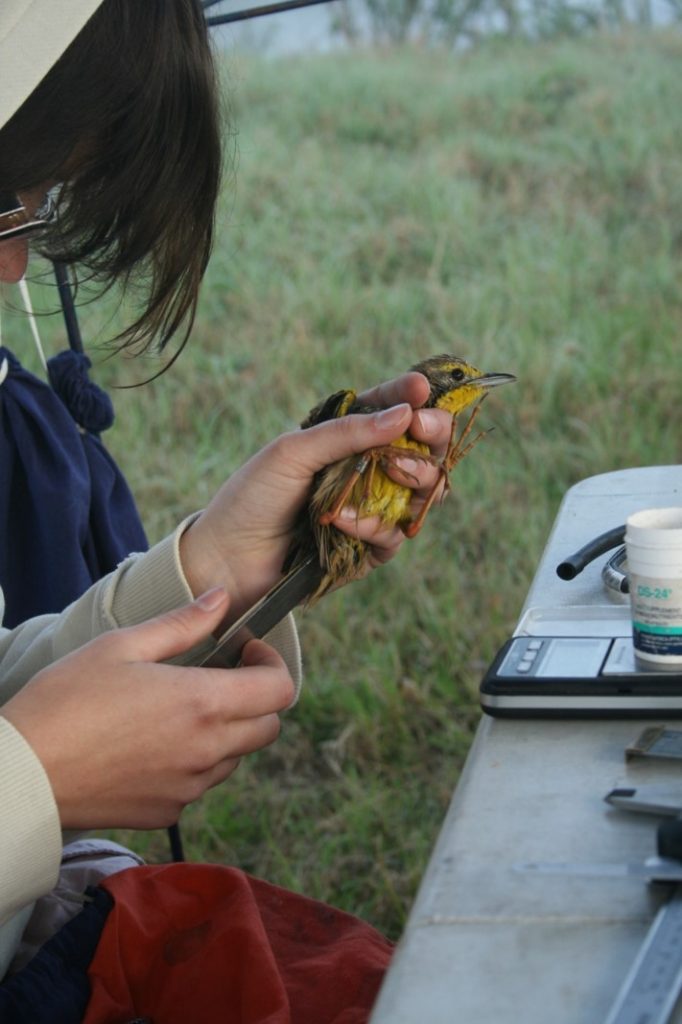
d. Noting down plumage changed and moult.
Primary and secondary wing moult in a malachite sunbird.

Tail moult in a fan-tailed widowbird.
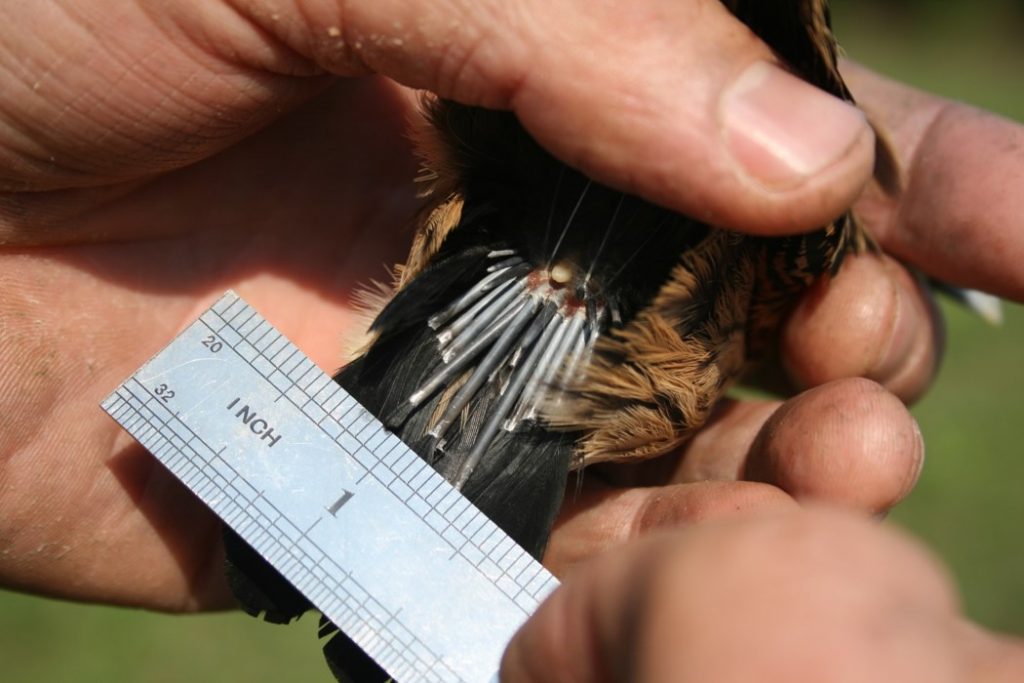
Body moult in a male red bishop.

e. Observations on breeding stages.
A bare belly with an increase in blood flow means the bird is brooding eggs and therefore actively breeding.
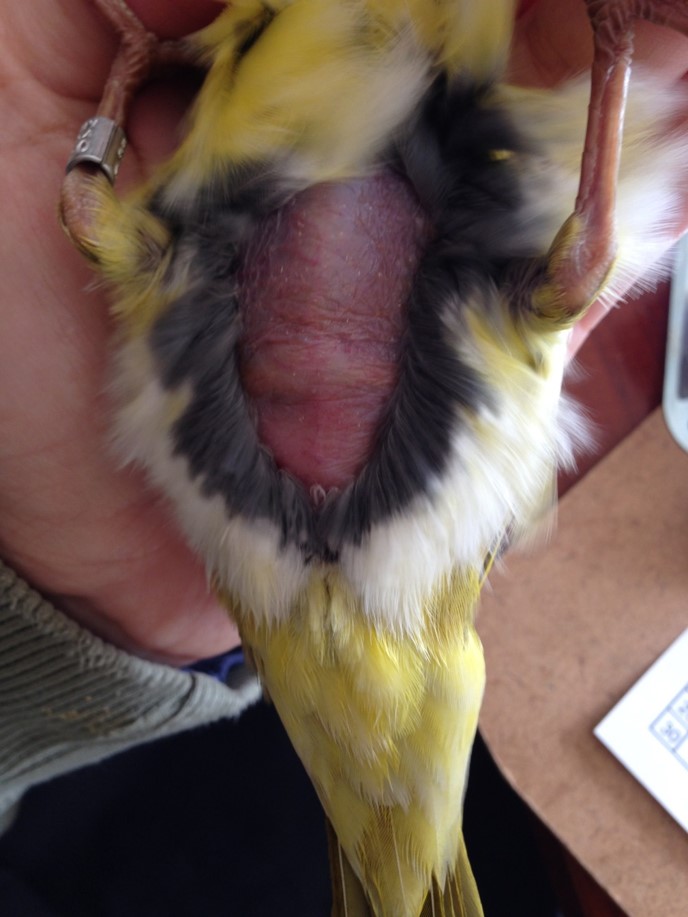
This brood patch is at a slightly later stage of the breeding process as the blood flow has decreased.

Once the bird has been processed, it is released safely back where it was caught. Although the process may seem stressful for the birds, research has shown that the birds experience stress levels equal to being pursued by a predator and then escaping. In fact many birds at regular ringing sites learn that the traps can mean free food. In particular, one site I work at has a family of fiscal shrikes that will repeatedly fetch mealworms from traps for as long as I keep refilling them. It becomes an endless process of emptying the traps just for two birds.
Ringers… who are they and how do I become one?
Ringers come from a variety of backgrounds. I was trained by a nurse and a scientist.
To become one, you need to train with a ringer regularly.
What will you learn?
- Identifying, ageing and sexing birds in the hand (knowing how to identify birds in the field helps).
- Learn how to put up mist nets and other traps correctly.
- Learn to take birds out of mist nets and other traps, safely, even if they are badly entangled.
- Learn how to choose the correct ring size & type, and how to close the ring correctly.
- Accurately measure and weigh birds.
- Correctly submit ringing data to SAFRING on a regular basis.
Your trainer will recommend you once he/she feels you are competent.
Average time to qualification: 2 years
Ringing and Science!
Regularly ringing in the same place can yield a recapture rate of approximately 10%.
From these recaptures we can gain insight into:
- Territories and migration patterns
- Longevity
- Moult
- Timing of breeding
- In 2016, South African ringers, ringed 52 448 birds. Retrapped 8 414 birds and recovered 33 birds, spanning across 268 species.
Some Interesting things we have seen in the hand, when looking closely at birds.
A cloacal growth.

Damage to tail feathers caused by stress during moult.

Ticks attach in some terrible places.

Other parasites common in nesting and newly fledged young birds.

Abnormal leucistic plumage.

A young white-eye getting his first feathers around its eyes.

Entanglements that they need help removing.
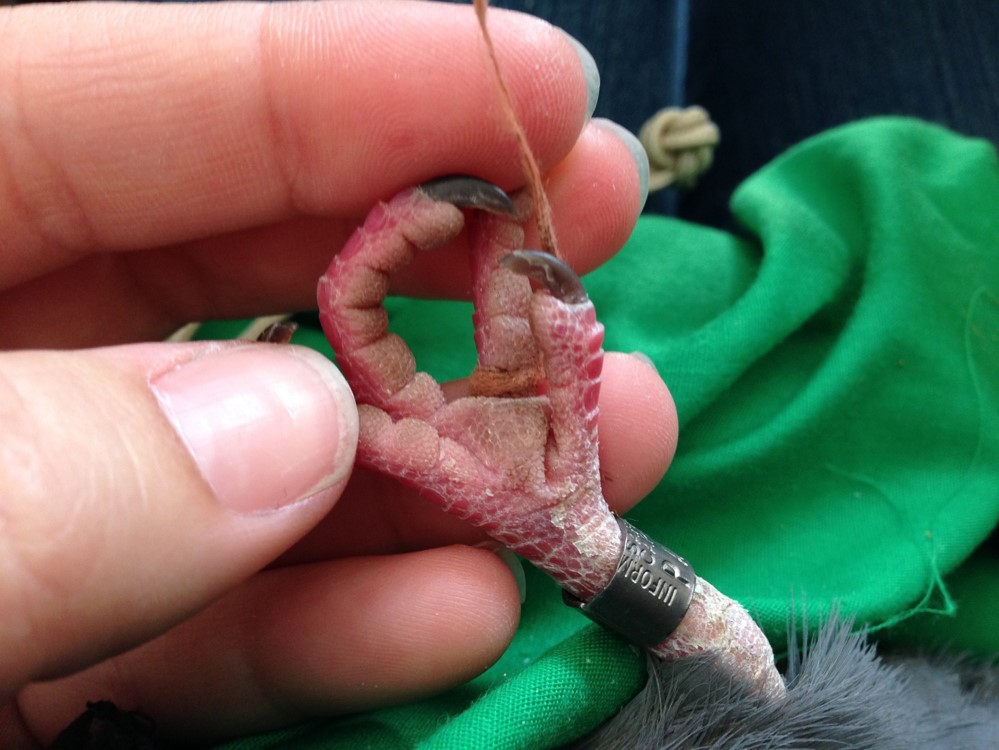
Abnormal eye colouration.

Disease progression through recapturing.

